Since 1883, Reading Museum has been collecting objects both locally and from around the globe to tell the story of Reading and its place in the world. Today, the museum houses almost half a million accessioned objects of archaeology, art, natural history, social history and world cultures, but only a very small percentage can be on public display at any one time. The bulk of the collections are behind the scenes in storage, where they are managed and cared for by the museum's collections team.
Recently, we have completed a major store move, transporting our collections to a new storage facility. With almost half a million objects to transport, this was—as you can probably imagine—no easy feat, particularly when moving huge, heavy stone capitals excavated from the Roman town of Silchester, or fragile Bronze Age burial urns made from extremely delicate 4,000-year-old clay materials. To help the move go as smoothly and risk free as possible, careful planning, documentation, packing and moving of every object was essential.
One of the most important tasks was to pack the collection objects safely and securely, to protect them from becoming damaged during the move. During this work, the collections team rediscovered some of the amazing, fascinating and unique objects that make up Reading Museum’s vast and varied collections.
One such collection recently rediscovered was the museum's Silesian Collection, which consists of domestic pottery vessels excavated from a Late Bronze Age-Early Iron Age cemetery site near Muskau, Silesia in central Europe.

One of our curators at work in the Reading Museum store.
In Europe, different ancient cultural groups were originally defined by the pottery wares they manufactured. One of the earliest pottery cultures first defined by Vere Gordon Childe, an archaeologist who specialised in the study of European prehistory, was the Linear Band Ware culture (or LBK) during the European Neolithic Period (5500–4500 BC). The collection we have at the museum dates mostly to the Late Bronze Age-Early Iron Age (1300 - 500 BC).
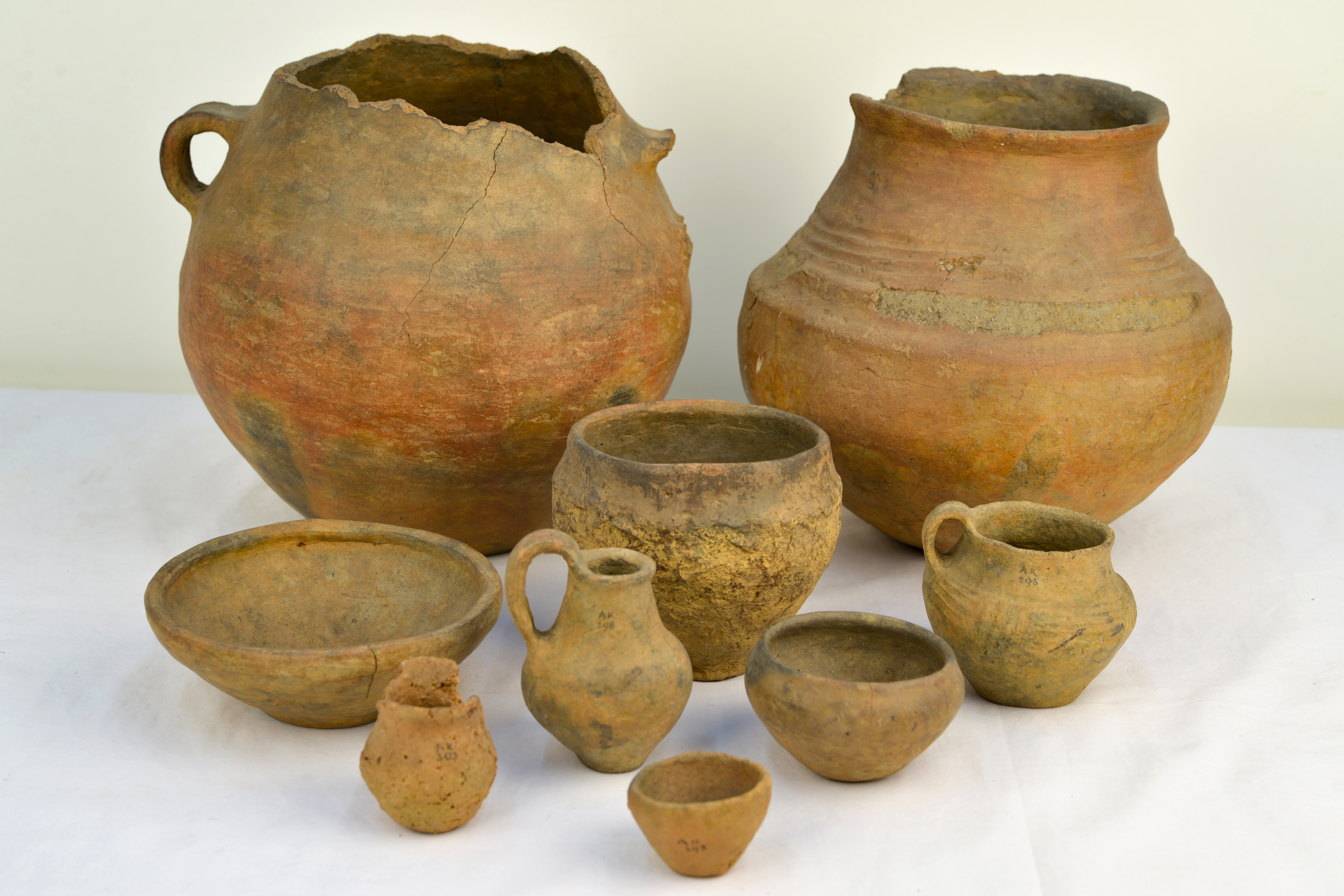
Several specimens from our Silesian Collection. (REDMG : Silesian Collection)
Silesian history: the cultural context of the collection
Silesia is a historical region in central Europe spanning the territory named Magna Germania by the Roman historian Tacitus.
Silesia covered southwestern Poland and parts of the Czech Republic and Germany. The region was continually inhabited by various ancient peoples who belonged to changing archaeological cultures across the Stone, Bronze and Iron Ages.
The find site of the Silesian Collection at Reading Museum, Muskau, is now called Bad Muskau. Today, it is situated in the German Federal State of Saxony, on the German border with Poland.
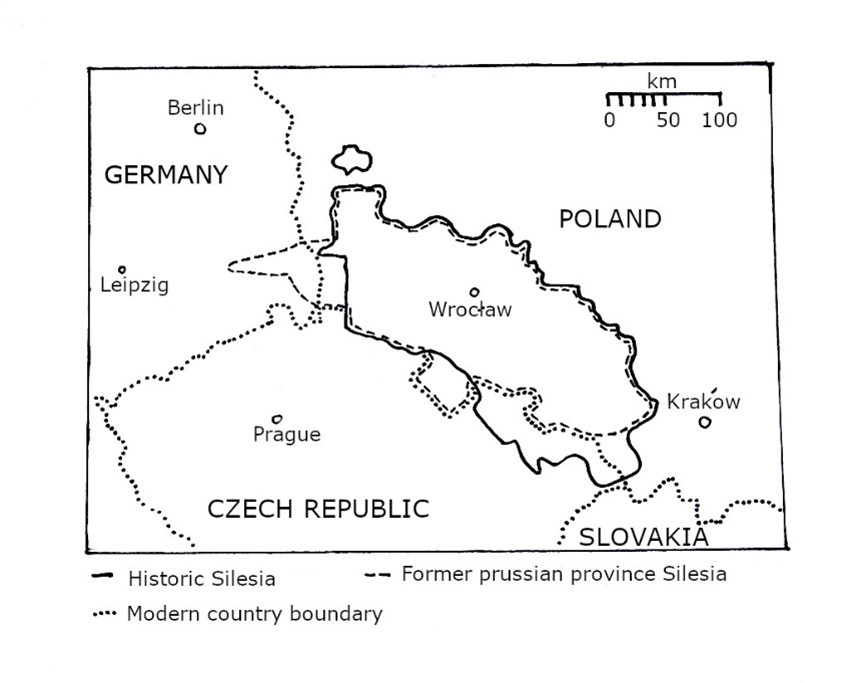
During the Late Bronze Age-Early Iron Age in Silesia, the Lusatian pottery culture was predominant in eastern Germany, most of Poland, parts of the Czech Republic and Slovakia, and parts of Ukraine. It occurred at the same time as the Urnfield culture found in eastern France via southern Germany and Austria to Hungary, and the Nordic Bronze Age in north western Germany and Scandinavia.
The pottery after which the Lusatian pottery culture was named comprises of simple bowls, vases, jugs and cups without handles, and—in a later phase—with lugs or pierced lugs, bases and necks. It began in the densely populated regions located on the middle Danube (Moravia, Bohemia and Hungary) and over 360 years it spread more than 1,500 km (930 miles) along the rivers.
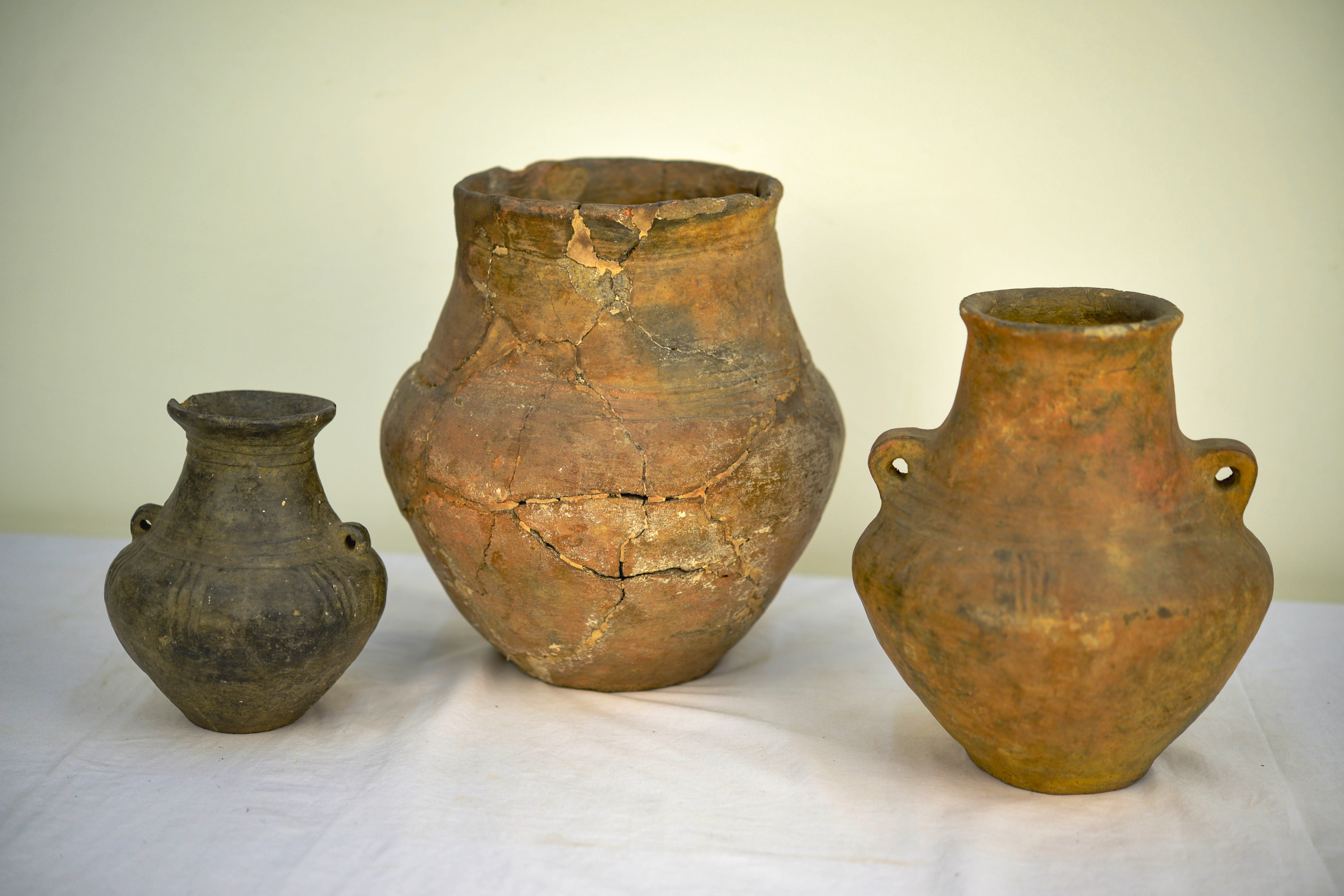
Silesian pottery vessels.
Most of the objects that have been excavated were found in graves. Burial was predominately by cremation; complete inhumations are rare. Burial urns are usually accompanied by numerous secondary vessels—sometimes up to 40—that may have contained food offerings. Metal grave goods are rare, but pottery vessels were regularly found buried with the deceased. Cemeteries can be quite large, and some contain thousands of graves.
The people at this time lived in small farming communities and their economy was mainly based on arable agriculture, as seen by the numerous storage pits discovered. Emmer wheat and six-row barley were the main crops, together with millet, rye and oats, peas, broad beans, lentils and gold of pleasure (Camelina sativa). The remains of domesticated apples, plums, and pears have been found too.
Pigs and cattle were the most important domestic animals, followed by sheep, horses, goats and dogs. Images on Iron Age urns from Silesia show horse riding, but horses were also used to pull chariots. Bones of red and roe deer, boar, bison, elk, fox and hare show that they were hunting too, but archaeological evidence indicates that most of their meat consumption came from domesticated animals.
In swampy areas, hoards of objects have been found dating to the late Bronze Age-early Iron Age, thought by some archaeologists to have been deposited as ‘gifts to the gods’. Human bones have also been found in 5m deep sacrificial pits in Lossow (Brandenburg) in Germany, which may be indicative of human sacrifice and possible cannibalism.
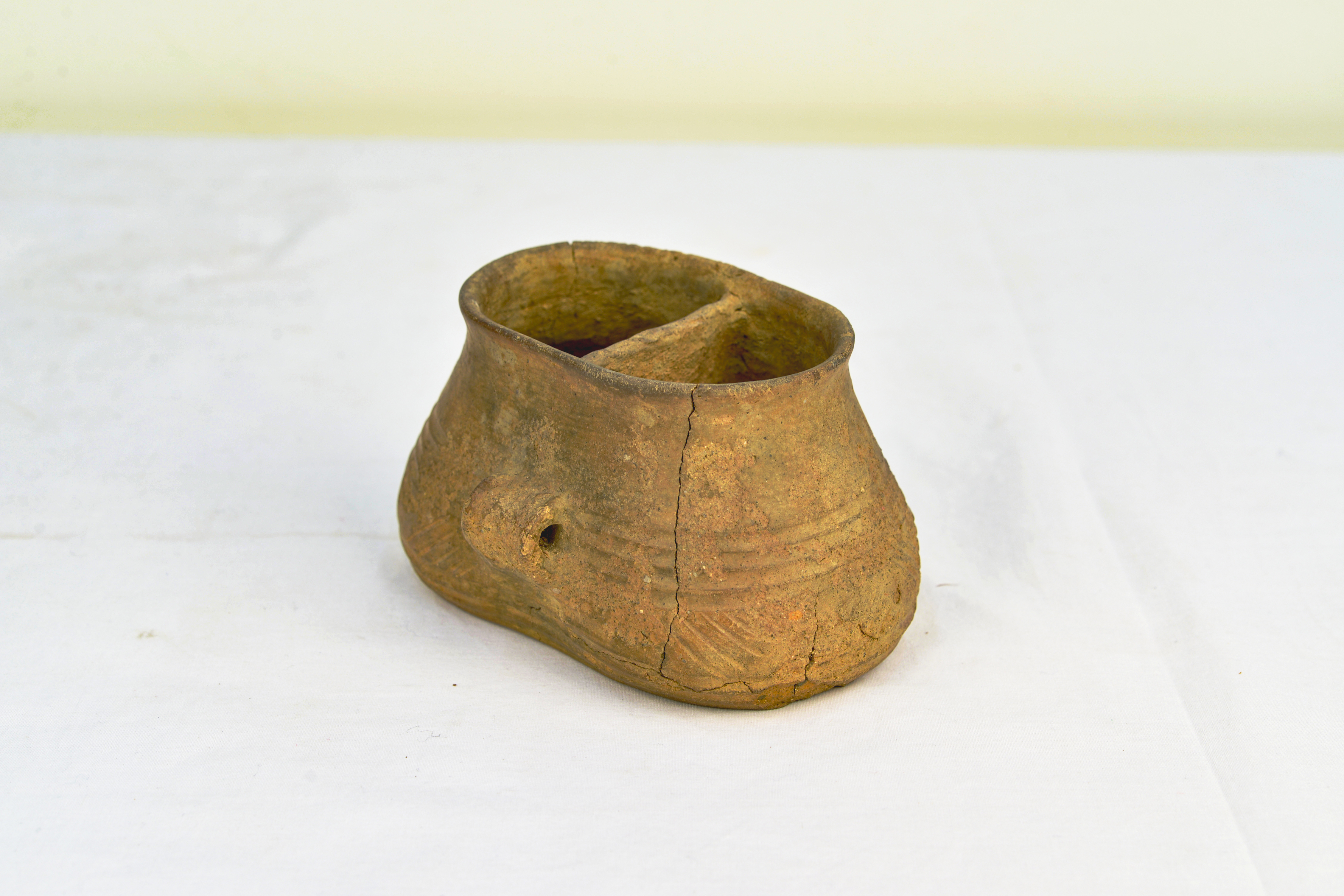
A rare form of double pottery vessel, possibly an urn. (Object number REDMG : 2016.28.8)
The Silesian Collection
The Silesian Collection consists of a collection of Bronze Age pottery and Iron Age vessels discovered during excavations carried out under the supervision of Mr Emile Louis Bruno Clement (1884-1928) of Yateley, Hampshire. Mr Clement was born in Silesia, Prussia in 1844, and came to the UK in 1870 where he became a teacher. He pursued a variety of occupations including archaeologist, teacher, naturalist, mining engineer, ethnographer, children's book author and ethnographic dealer.
From 1887 to 1890, Dr Clement was involved in a series of excavations in Silesia, including the Bronze Age archaeological sites in the Neisse River area of Germany (Silesia). He sold collections of excavated objects to numerous UK museums including the British Museum and the Royal Museum of Scotland in 1877, museums in Edinburgh, Cardiff and Dublin in 1883, the Museum of Archaeology and Anthropology at the University of Cambridge and the Ashmolean Museum in 1886, and Reading Museum in 1885. His largest contribution to museums were his collections of Western Australian Aboriginal artefacts that he sold to various museums in Europe and the UK.
According to our records, the Silesian Collection consists of 49 Bronze Age objects:
- five large and seven medium sized cinerary urns
- seven basins-shaped vessels (evidently to contain food)
- one double urn (rare form)
- 10 small cups, 13 small ‘toy’ vessels
- one incense vessel and stand
- four bronze articles
- and a string of children’s beads.
These objects were part of a larger collection of 200 pottery vessels that was split between various UK museums.
The excavation
It was stated, by the excavators, that the objects were discovered about three miles from Muskau, Silesia. On a hill platform near the River Neisse, an ancient cemetery was found occupying a space around a central circular area. The urns were positioned in the ground in rows radiating from a common circular centre. The circular feature at the centre was 15 feet in diameter, and on the east side of this were two rows of parallel standing stones, each five feet apart, which seem to form part of a pathway or avenue leading to the circular space where the pottery was located.
The burial urns were found at a depth of two to three feet and the excavators found, in most cases, that the urns were filled with cremated human remains. Some urns were covered with other pottery vessels such as saucers and bowls, which is a characteristic feature of Silesian burials of the Late Bronze Age-Early Iron Age period, attesting to the Lusatian pottery culture. The urn burials were surrounded by various grave goods such as other pottery vessels, and one burial had 22 vessels accompanying it. Some of the urns contained, as well as burnt human bone and ash, bronze objects. These objects were misshapen and the metal partly molten, with parts of the metal adhered to the bone, showing that the dead had been cremated with the ornaments on their person.
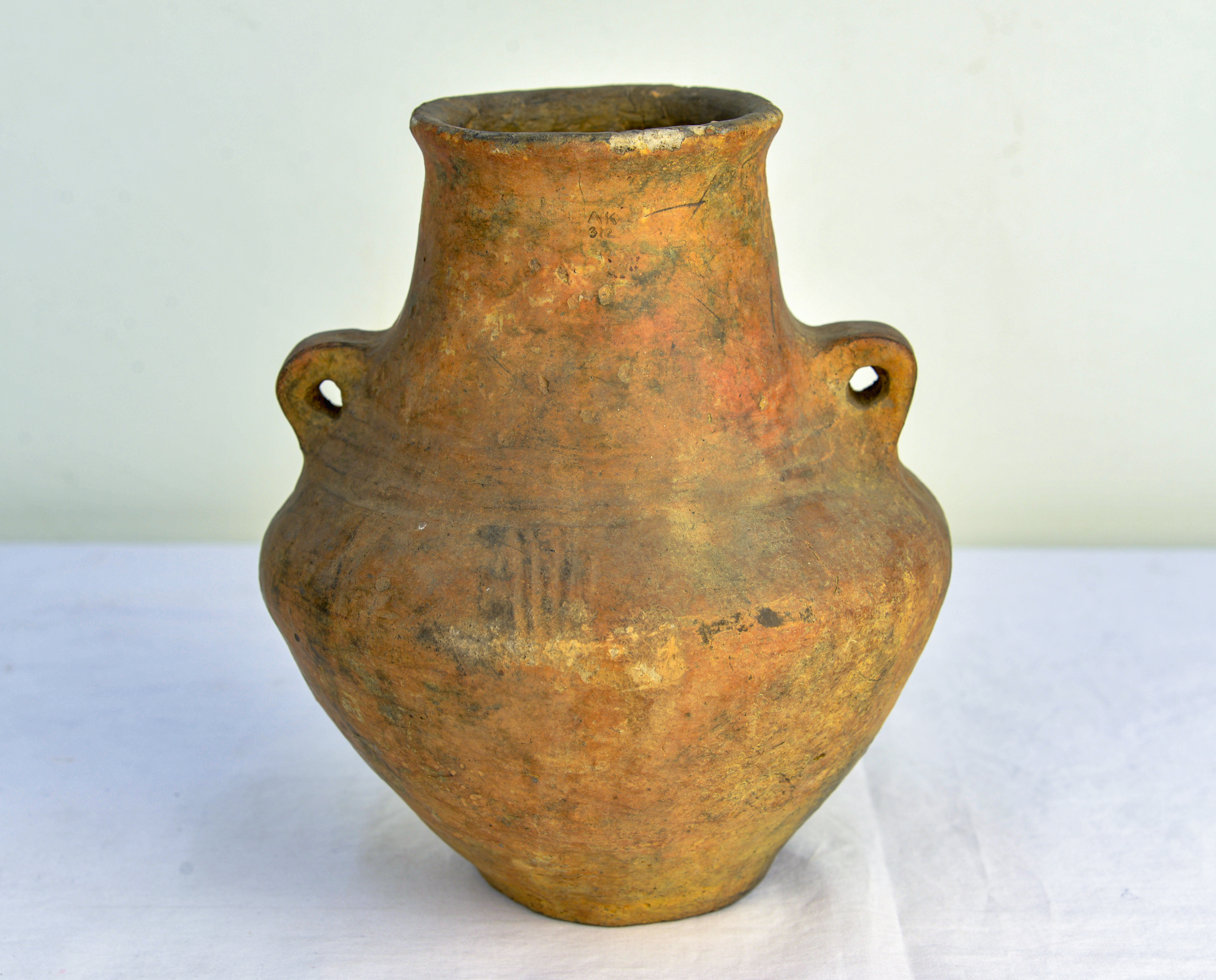
A Silesian pottery vessel. (Object number REDMG : 2016.28.8)
Urns containing children’s bones were also discovered. The main cremation urns were surrounded by small pottery dishes and cups which, due to their small size, were believed by the excavators to be children’s toys. These vessels were generally roughly handmade of course clay. In one of the children’s urns, aged 10 from bone analysis, 26 beads were found lying in a row and had clearly been threaded in life (possibly in the form a bracelet or necklace).
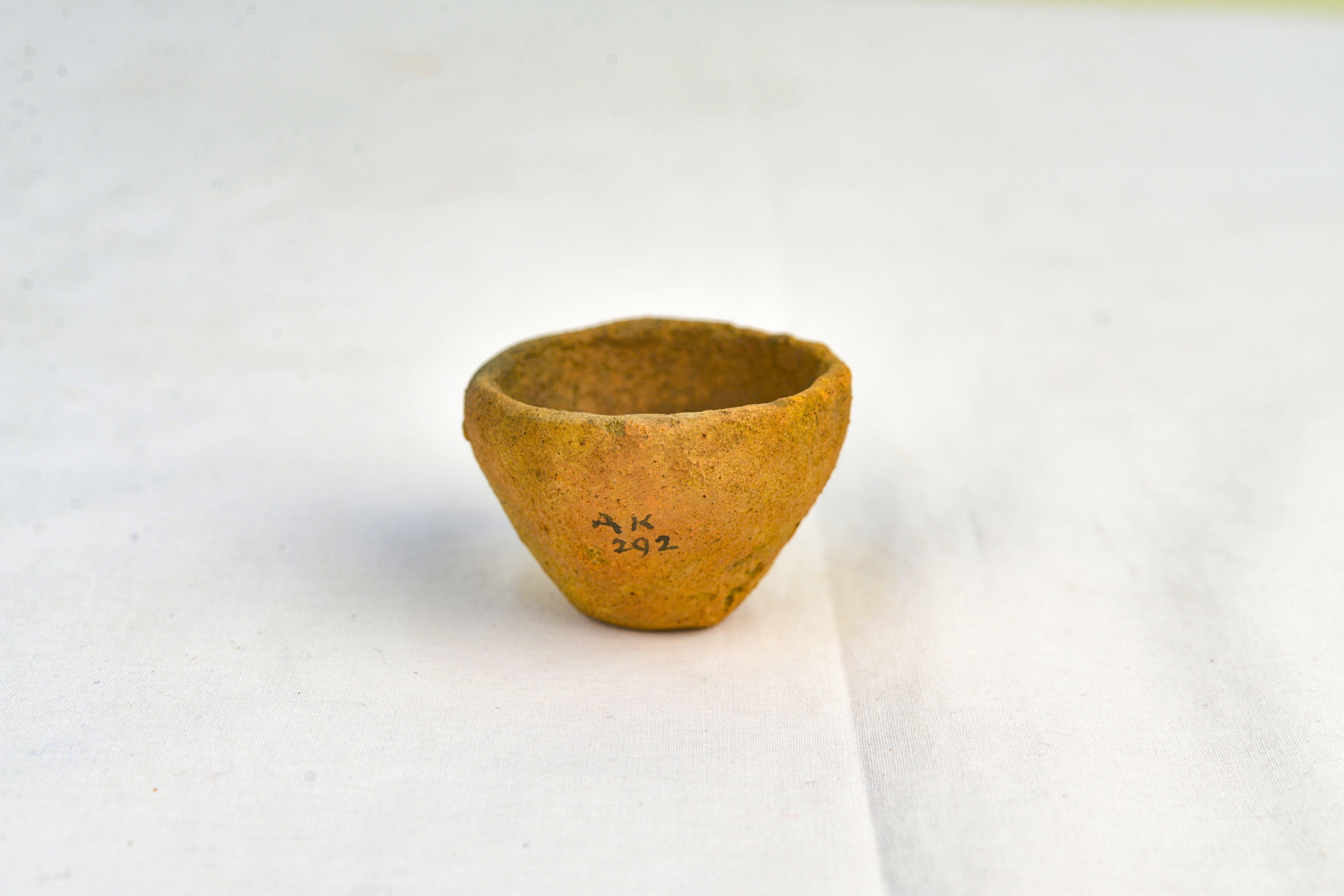
A small ‘toy’ pottery vessel found in a child’s burial. (Object number REDMG : 2016.28.16)
Learn more
You can find out more about various objects in the Silesian Collection and other fascinating objects in the museum collections by visiting Reading Museum’s Collections Online, where we have recently added hundreds of new object records.





